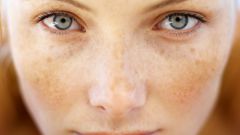Pigmentation of hair
Melanin is responsible for color intensity and saturation depends on air quantity in the pigment. There are two pigment responsible for hair color is eumelanin and pheomelanin. Eumelanin is black and brown. This pigment consists of elongated granules. Pheomelanin is responsible for the yellow-red color, consists of round and oval granules. In combination they give a certain color scheme, which depends on genetic factors. Most of the pigments contained in the center of the hair, the hair cuticle pigments are almost there.
If the hair contains more eumelanin, dark hair. If, on the contrary, pheomelanin prevails, the hair has reddish undertones. And when the content of the two pigments is not very big, the hair has bright colors.
Basic hair color is blonde, brown, red, brown and black. There are about 56 shades of hair.
What can change hair color?
Quite often in children under age 2 change hair color. The final color of hair typically to 5 years. But in some cases this happens in puberty. During this period, the hair may darken due to intake of testosterone.
At the age of 20 to 30 years, the hair can begin to lose pigmentation, decreases the amount of melanin produced, a large amount of air bubbles, which leads to graying of hair. This process begins at the roots first, the hair becomes gray and eventually completely white.
At what age will begin to appear gray hair depends on the genetic predisposition of the person. The appearance of gray hair can be prevented. For this you need to eat right, maintain a healthy lifestyle, to use of means on care of hair.
Hair color can also change under the influence of external factors that provoke the failure in the production of melanin. For example, due to stress or lack of nutrients.
Diseases that affect hair color
There are diseases that affect hair color, for example, albinism, vitiligo, Werner syndrome.
Albinism is a genetic anomaly in which the hair, eyes and skin contains a very low amount of pigment. Albinos have very pale skin and hair and eyes have a grayish color.
Vitiligo – a disease in which the hair and skin lose color. The disease can develop due to autoimmune diseases.
Werner syndrome may cause premature graying.





